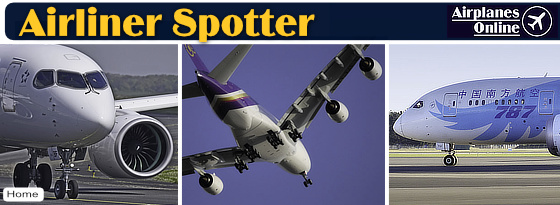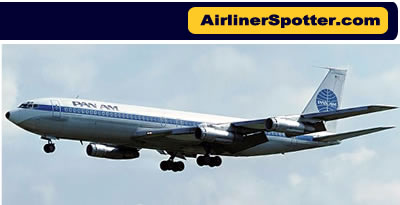Boeing 707 Spotting Guide
The Boeing 367-80, the "Dash 80", was the prototype aircraft for the Boeing 707 jet airliner, the Air Force C-135 Stratolifter, and KC-135 Stratotanker. It was rolled out of the assembly line in May of 1954 from Boeing's Renton, Washington plant.
The successful testing of the Dash 80 led to many orders for Boeing from multiple airlines. The first commercial orders for the 707 came on October 13, 1955, when Pan American World Airways ordered 20 aircraft.
The first flight of the first production 707-120 plane took place on December 20, 1957, and FAA certification followed on September 18, 1958.
Boeing 707 Background and Development
Boeing 707 of Trans World Airlines |
The commercial 707 and the military C-135 shared many similarities and components. However, the airlines wanted the 707 fuselage to be 4 inches wider than the tanker version. Its width and the 100-foot length made it the largest passenger cabin in the air. Placement of more than 100 windows allowed airlines to rearrange seats. Location of passenger doors on the left side, at the front and at the rear of the cabin, became standard for subsequent Boeing jets.
Its cruising speed of 575 miles an hour was 225 miles an hour faster than its nearest propeller-powered rival.
The 4-engine 707 entered commercial service on October 26, 1958, when Pan Am flew 111 passengers on its 707-121 "Clipper America" (N711PA) from New York's Idlewild Airport to Paris in 8 hours and 41 minutes, twice as fast as a piston-engine airliner. The flight stopped at Gander, Newfoundland to refuel.
Boeing 720 and Other Variants
Boeing custom-designed 707 variants for different customers. It built special long-range models for Qantas Airways of Australia, and installed larger engines for Braniff's high-altitude South American routes.
A number of variants were developed for special use, including shorter-bodied airplanes and the 720 series, which was lighter and faster with better runway performance. The 707 was designated the 720 when it was modified for short-to-medium routes and for use on shorter runways. On the 720 engineers reduced the fuselage length by 9 feet, changed the leading-edge flaps and later installed turbofan engines.
Boeing 707 High Frequency (HF) Antenna
Note the all 707-320s had high frequency (HF) antennas at the leading edge of the top of the tail. The antennas were also used on 707-100 and 720s that flew in international and overwater airspaces. Some 707s, however, did not have the antenna such as those used on domestic routes in the United States by American Airlines, United Airlines and Trans World Airlines. In the image below, one can see the HF antenna mounted on a Boeing 707 of Continental Airlines. |
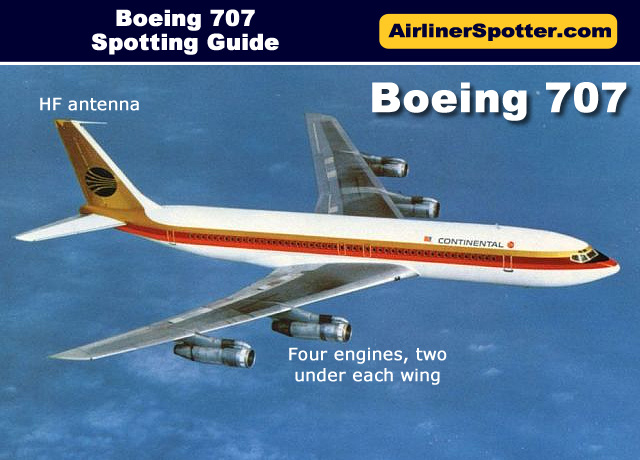 |
Boeing 707 Production
The final commercial 707 was produced in 1979, with the final major derivative being the 707-320, a larger intercontinental series with a longer fuselage, bigger wing and higher-powered engines. With these improvements, the 707 had an intercontinental range of over 4,000 miles in a 141-seat configuration.
The 707 production line remained open for purpose-built military variants until 1991, with the last 707 airframes built as E-3 and E-6 aircraft.
When production ended, over 1,000 Boeing 707 aircraft had been manufactured by Boeing.
The 707 had become the most popular jetliner of its time, and transformed the airline industry in a short period of time. Its popularity led to rapid developments in airport terminals, runways, airline catering, baggage handling, computerized reservation systems, and other air transport infrastructure.
The success of the 707 made Boeing the leader in commercial airliners, and led to a popular family of jetliners introduced over the years: the 727, 737, 747, 757, 767, 777, and the 787 Dreamliner.
| Boeing Model 367-80, the Dash-80, the 707 prototype, at the Udvar-Hazy Center at Dulles Airport (Staff Photo) |
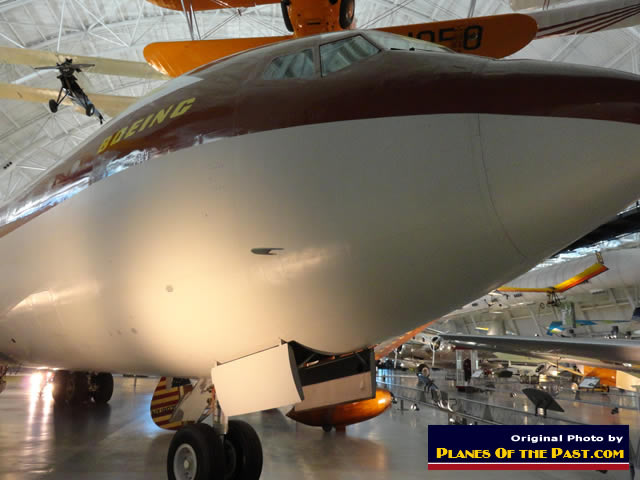 |
Boeing 707 Vintage Postcards
| BOAC Boeing 707 |
| Boeing 707 of British Airtours |
| British Caledonian Boeing 707 |
| Lufthansa Boeing 707 |
| Boeing 707 of Pan American World Airways (postcard from the author's collection) |
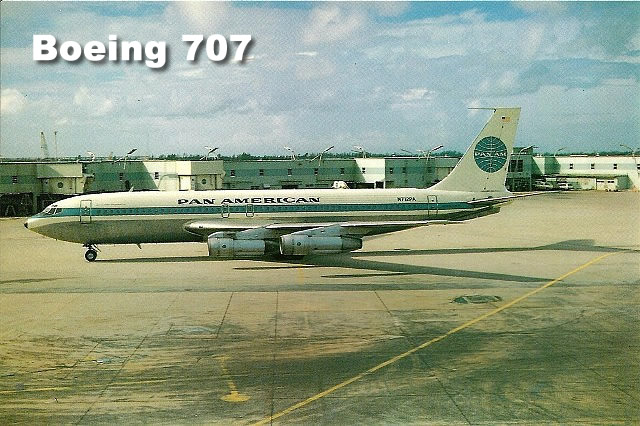 |
| TWA Boeing 707 (postcard from the author's collection) |
VC-137 Presidential Aircraft
Towards the end of Dwight Eisenhower's term in 1958, the Air Force added three Boeing 707 aircraft into presidential fleet. In October of 1962, the Air Force purchased an additional aircraft, a VC-137 designated as Special Air Mission (SAM) 26000.
SAM 26000 served presidents from 1962 to 1998, carrying Presidents Kennedy to Clinton. It is on display at the Museum of the U. S. Air Force in Dayton, Ohio.
In December of 1962, another VC-137C was added to the inventory, known as SAM 27000. Today, 27000 is on display at the Reagan Presidential Library in Simi Valley, California.
| Boeing VC-137B, "Freedom One", at the PIMA Air & Space Museum, Tucson, Arizona One of three Boeing 707-153s converted to military use, this aircraft was completed as a VC-137A by Boeing in Seattle, Washington in April 1959. (Staff Photo) |
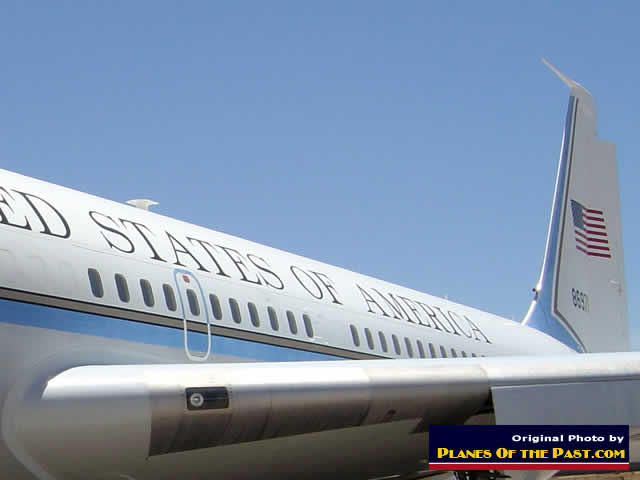 |
| Boeing VC-137C Presidential Jet - Special Air Mission (SAM) 27000 at the Ronald Reagan Presidential Library Simi Valley, California (Staff Photo) |
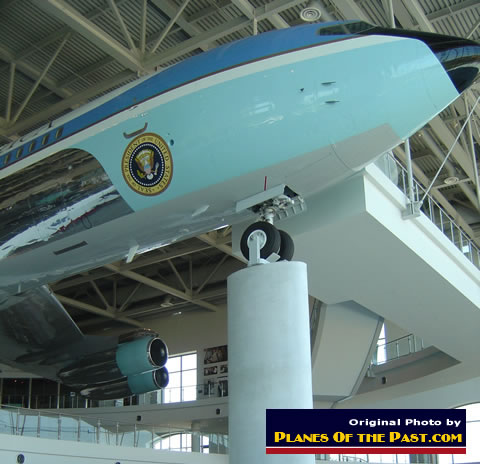 |
Boeing 707 Variants
Boeing E-3A Sentry, AWACS LX-N90445 de Greilenkirchen - NATO (Photo by DELEHELLE Eric) |
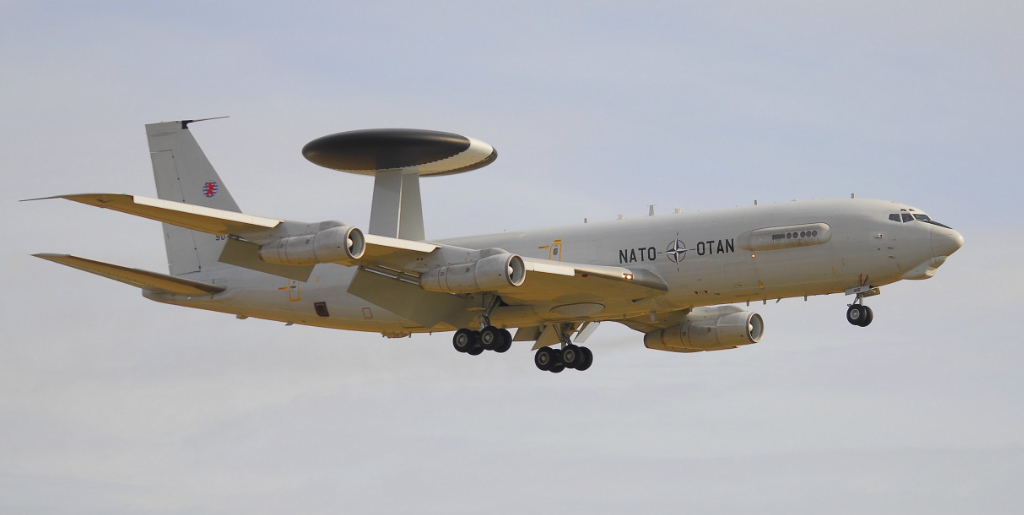 |
Boeing E-3A Sentry, AWACS LX-N90445 de Greilenkirchen - NATO (Photo by DELEHELLE Eric) |
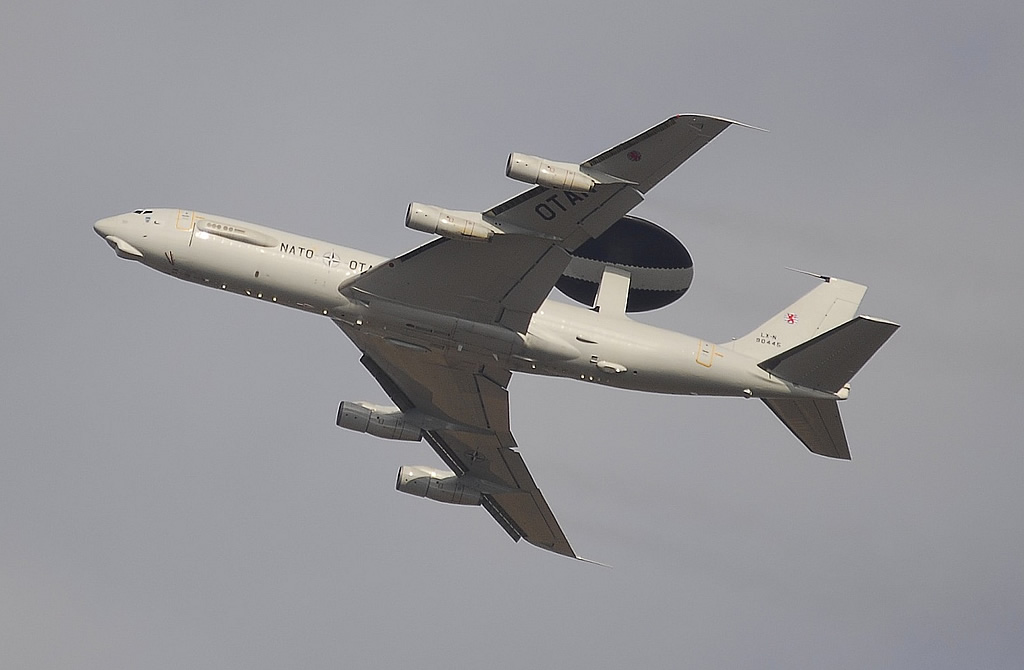 |
U.S. Air Force KC-135, 00328, in flight over Reims France in 2009 (Photo by DELEHELLE Eric) |
 |
Israeli Air Force Boeing B-707-3L6C Re'em, 272, at Châteauroux-Centre "Marcel Dassault" Airport in France (Photo by DELEHELLE Eric) |
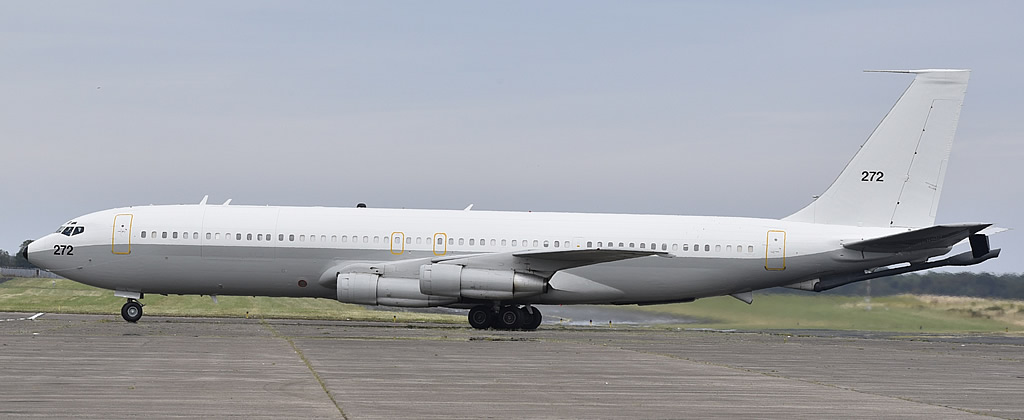 |
Israeli Air Force Boeing B-707-3L6C Re'em, 272, at Châteauroux-Centre "Marcel Dassault" Airport. Used for various transport duties, and as an aerial tanker (Photo by DELEHELLE Eric) |
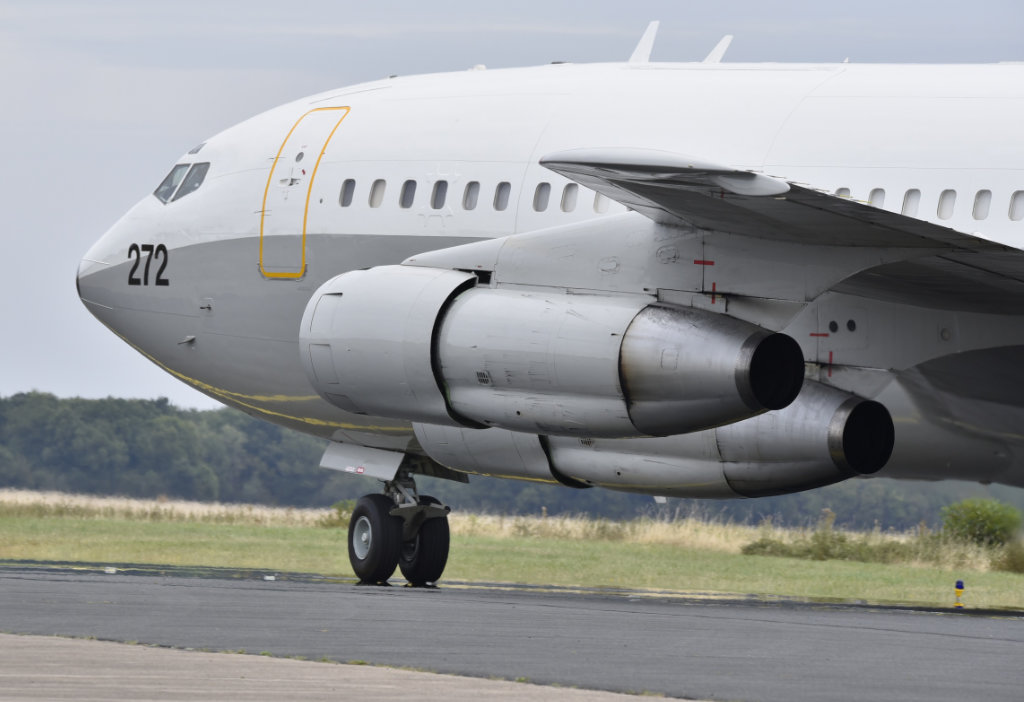 |
